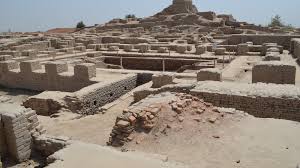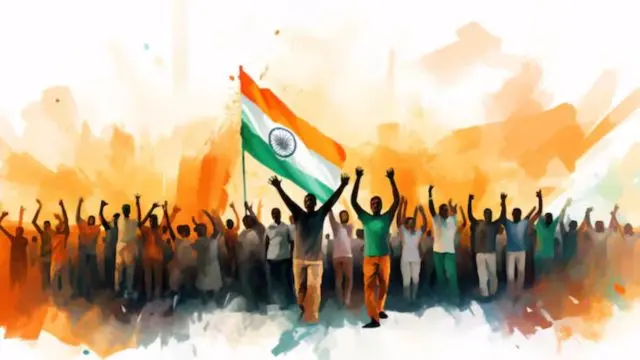India Through Time
Journey through 9,000 years of civilization

Indus Valley Civilization
The World's First Urban Planners
One of the world's earliest urban civilizations, the Indus Valley people created sophisticated cities with advanced drainage systems, standardized weights and measures, and a script that remains undeciphered. Their peaceful society thrived on trade and craftsmanship, establishing the foundation for urban planning that influences city design even today.

Vedic Age
The Foundation of Indian Philosophy
The Vedic period saw the composition of the world's oldest religious texts and the establishment of philosophical frameworks that continue to influence billions today. This era laid the foundation for Hinduism, Buddhism, and Jainism, while developing sophisticated understanding of astronomy, mathematics, and metaphysics.

Mahajanapadas
The Rise of Republics and Kingdoms
The Mahajanapadas period marked the transition from tribal societies to organized states, featuring the world's earliest republics alongside powerful kingdoms. This era witnessed the birth of Buddhism and Jainism, revolutionary democratic experiments, and the foundation of systematic governance that would influence political thought for millennia.

Mauryan Empire
India's First Superpower
The Mauryan Empire was ancient India's largest and most powerful state, stretching from Afghanistan to Bangladesh. Under Ashoka, it became the world's first empire to officially promote non-violence and religious tolerance, establishing administrative systems and moral principles that influenced governance across Asia for centuries.

Gupta Empire
The Golden Age of Indian Civilization
The Gupta period represents the pinnacle of ancient Indian achievement in science, mathematics, astronomy, medicine, literature, and arts. This golden age saw the invention of the decimal system, revolutionary advances in surgery, the flourishing of Sanskrit literature, and the creation of artistic masterpieces that defined classical Indian aesthetics.

Post-Gupta Period
Regional Kingdoms and Cultural Diversity
Following the Gupta decline, India saw the rise of powerful regional kingdoms that preserved and developed distinct cultural traditions. This period witnessed the culmination of temple architecture, the birth of regional languages and literatures, and the continued flourishing of trade and learning despite political fragmentation.

Imperial Cholas
Masters of the Seas
The Chola Empire was the longest-ruling dynasty in world history and a maritime superpower that dominated the Indian Ocean. Their naval expeditions reached Southeast Asia, establishing trade networks and cultural connections that lasted centuries, while their bronze art and temple architecture represent the pinnacle of South Indian achievement.

Delhi Sultanate
The Islamic Transformation
The Delhi Sultanate marked the beginning of sustained Islamic rule in India, bringing new architectural styles, administrative systems, and cultural synthesis. This period saw the construction of magnificent monuments, the development of Indo-Islamic art, and the creation of a cosmopolitan culture that blended Islamic, Persian, and Indian traditions.

Mughal Empire
The Grand Synthesis
The Mughal Empire represents the zenith of Indo-Islamic civilization, creating architectural marvels like the Taj Mahal and establishing a sophisticated administrative system that unified much of the Indian subcontinent. Under rulers like Akbar and Shah Jahan, it fostered an unprecedented cultural synthesis that blended Islamic, Persian, and Indian traditions.

Maratha Empire
The Hindu Revival
The Maratha Empire, founded by Shivaji, represented a powerful Hindu revival that challenged Mughal dominance and established a confederacy controlling much of India. Known for their guerrilla warfare tactics and administrative innovations, the Marathas created India's last major indigenous empire before British colonization.

British East India Company
The Corporate Conquest
The British East India Company transformed from a trading corporation into a colonial power, gradually conquering Indian territories through military might and political manipulation. This period saw the exploitation of India's resources, the introduction of Western education and legal systems, and the beginning of organized resistance that would eventually lead to independence.

British Raj
The Crown Colony
The British Raj marked the height of British colonial power in India, establishing direct Crown rule after the Company's dissolution. This period witnessed massive infrastructure development, the independence movement's growth, and the eventual partition of India, fundamentally transforming the subcontinent's political, social, and economic landscape.

Independent India
The Democratic Experiment
Independent India represents the world's largest democracy, transforming from a newly partitioned nation into a major global power. Despite challenges of poverty, partition, and development, India has maintained democratic institutions, achieved remarkable economic growth, and emerged as a leader in technology, space exploration, and global affairs.
Complete History Podcast
9,000 Years of India